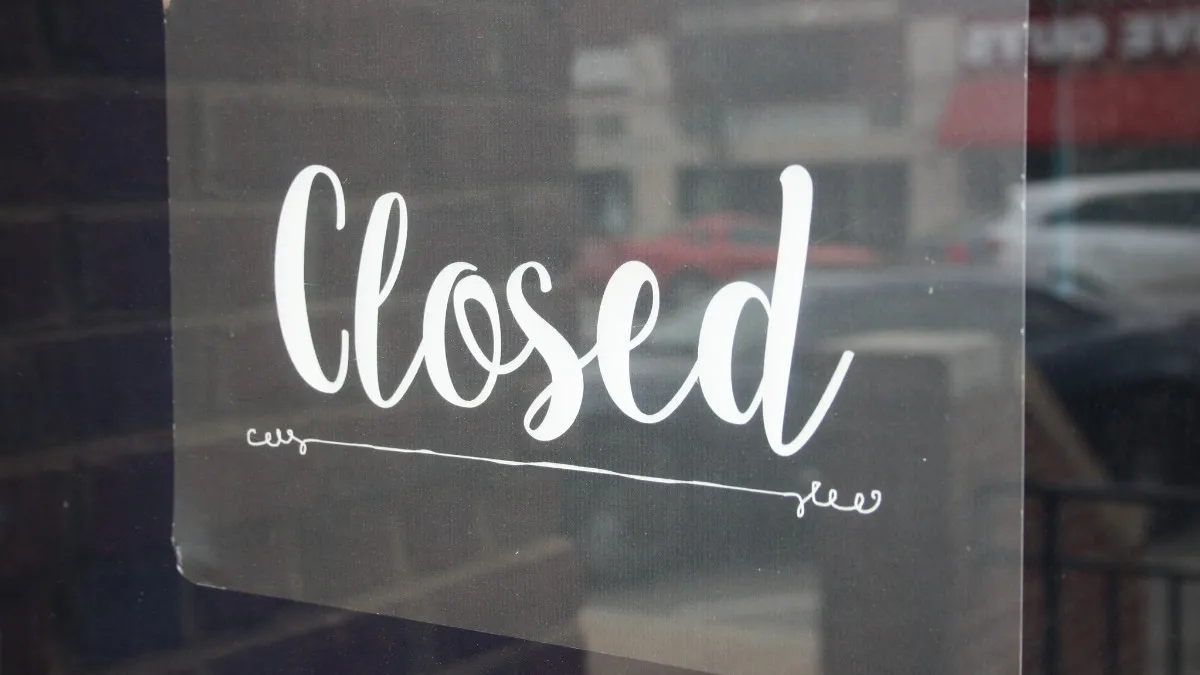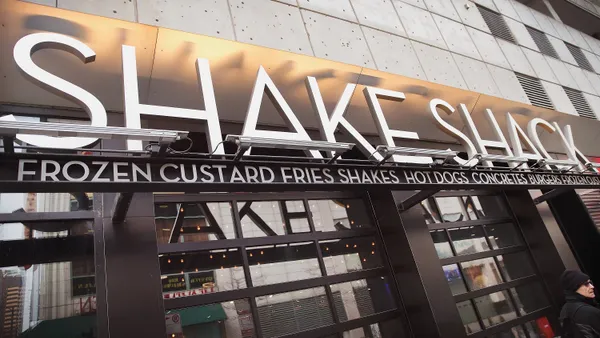Dive Brief:
- Over 10% of U.S. restaurants have closed permanently since the start of the pandemic in March 2020, according to Datassential research. This equates to 79,438 shuttered restaurants out of the 778,807 in operation since the onset of COVID-19. The data does not include restaurants that have opened during the pandemic.
- The food truck segment has been the hardest hit of any foodservice segment, with 22.5% of mobile eateries closing. The quick-service segment has had the fewest closures, losing only 9.8% of fast food joints. Chain restaurants with less than 501 locations have closed at a higher rate than independent restaurants, with the largest permanent closure rate —16.2% — among chains with 51 to 100 units.
- Cuisine type played a key role in closure rates. Buoyed by consumers seeking familiar comfort food during the crisis, burger concepts have performed the best of all cuisine types, with a 7.3% closure rate. Thai food restaurants also performed relatively well, with a 7.5% closure rate, perhaps illustrating the cuisine's portability. French restaurants had the highest closure rate by cuisine type at 15.3%.
Dive Insight:
Datassential's closure numbers are lower than estimates from other industry organizations. The National Restaurant Association estimated in December, for example, that about 110,000 restaurants have closed permanently, or about 17% of the industry's eateries. Both of these projections are much sunnier than the Independent Restaurant Coalition's forecast in June, which estimated as many as 85% of independent restaurants could close by the end of 2020.
The Datassential report also shows that mid-sized restaurant chains have been dealt the worst hand amid the pandemic, reflecting several bankruptcy announcements by smaller franchise players last year. In 2020 alone, Rubio's, Ruby Tuesday, Sizzler, Le Pain Quotidien's U.S. branch, Garden Fresh Restaurants and Garbanzo Mediterranean Grill filed for bankruptcy.
Even larger chains, like Subway, Starbucks, Dunkin', Pizza Hut, IHOP and Applebee's have closed hundreds of underperforming restaurants throughout the past year. In fact, months after the pandemic had set in, analysts predicted that nearly two-thirds of publicly-traded restaurants were at risk of bankruptcy. Chains were perhaps more vulnerable than independents as they accumulated large debt loads to keep the lights on and workers employed during nationwide shutdowns.
Several big chains — including Domino's, Wingstop, McDonald's and Chipotle — have been favorably positioned because of their cash flow and ability to be technologically nimble, and have continued to grow despite the crisis.














